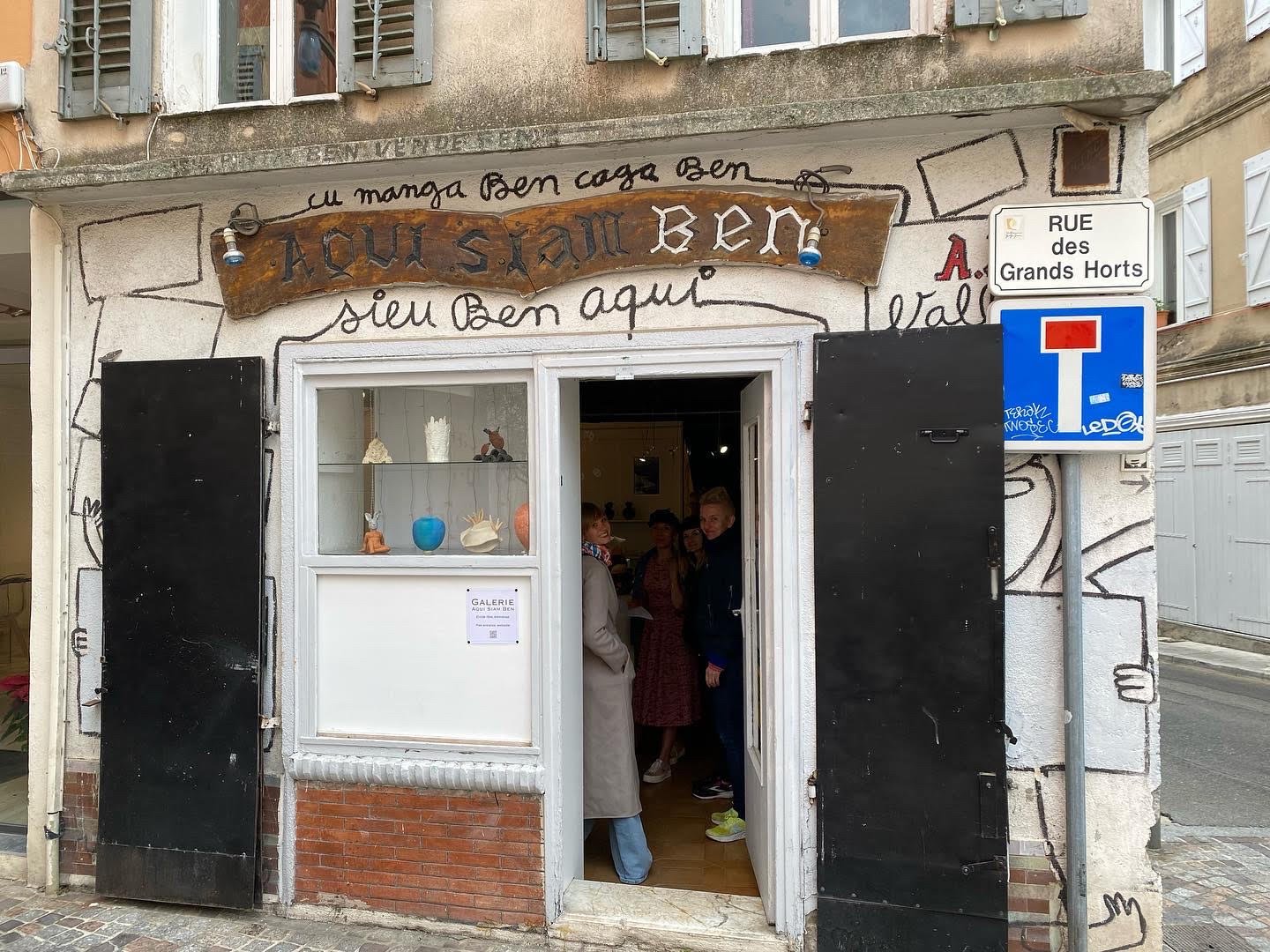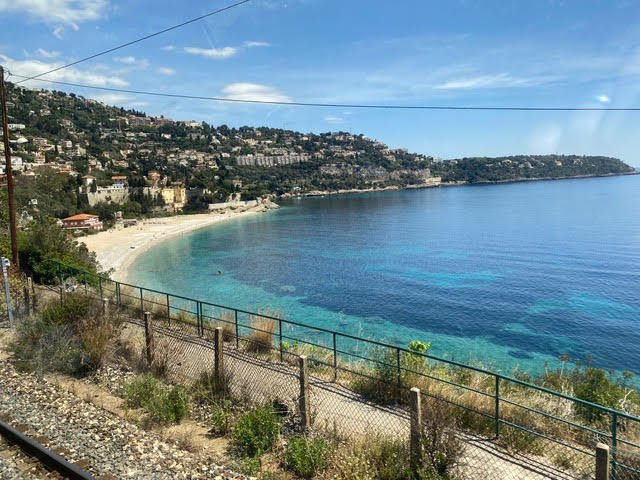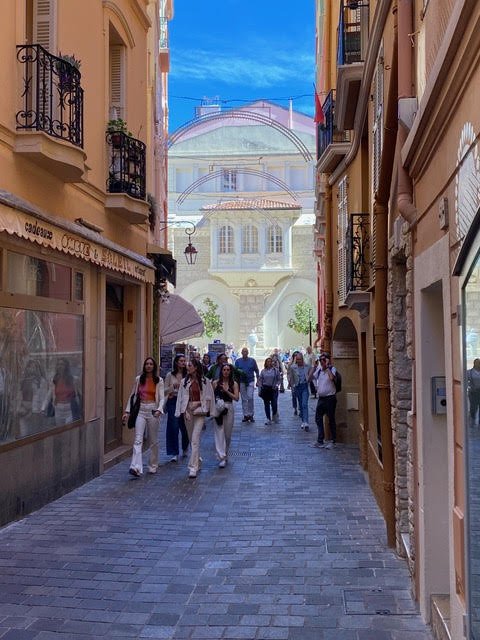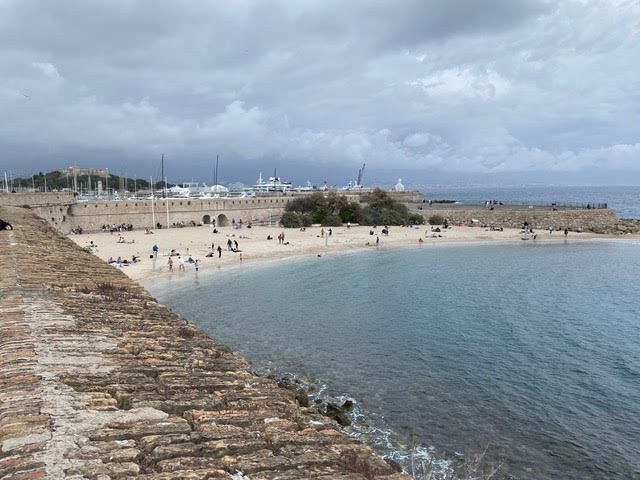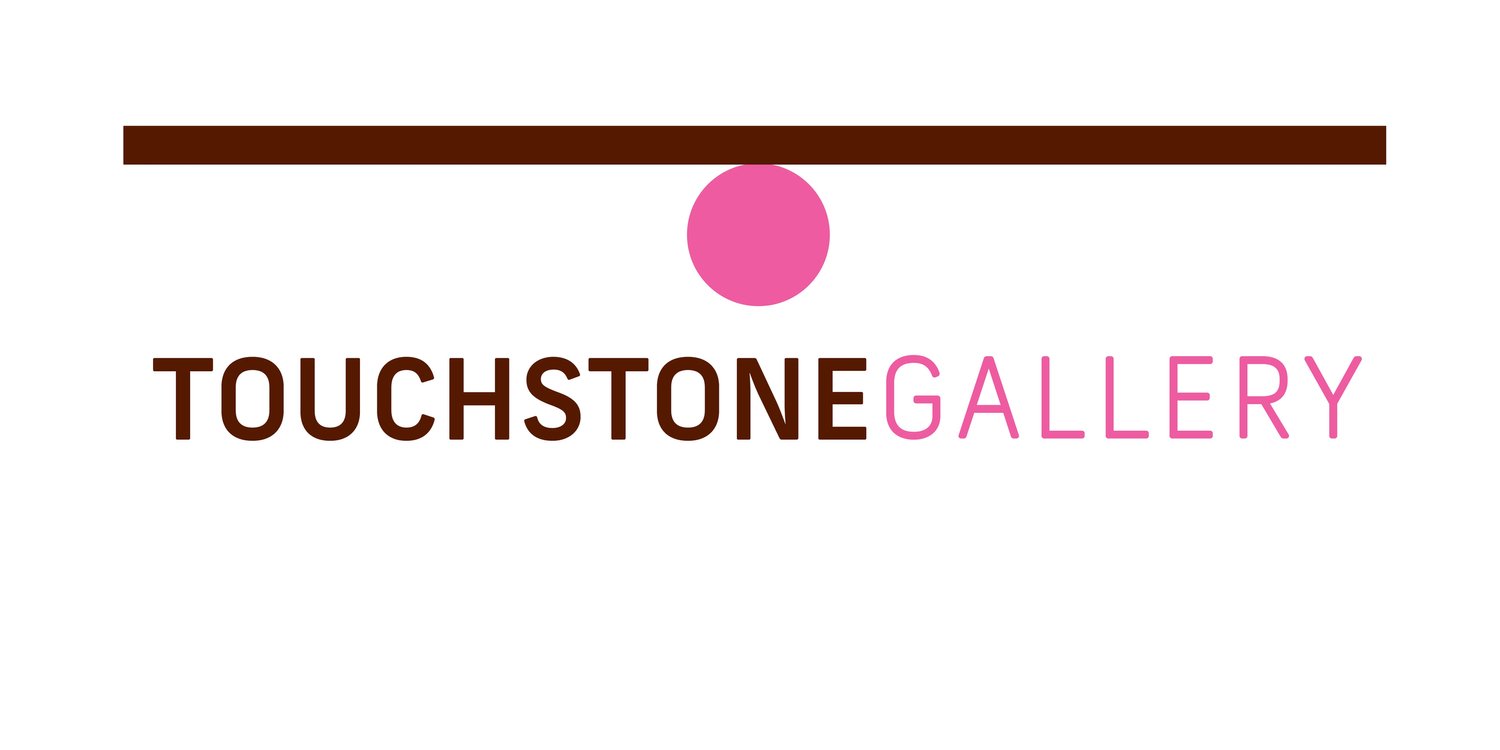The third and last article in the French Connections series on Touchstone artists and their links to France. Intern Emma Cunningham-Bradshaw spoke with McCain McMurray about his experience at an artist residency on the southeast coast of France. McCain was inspired by the environment there more than he usually is, and painted many pieces named after particular towns along the Côte d’Azur. He painted with lighter colors, reflective of the luminous colors around him, while retaining his signature architectural style. You can also read the other articles in the French Connections series (Part I and Part II)
This past April, McCain McMurray traveled to France for a five week long artist residency. The program is called Artists in Residence (AIR) in Vallauris, a town on the southeast coast of France, not too far from Italy. For centuries, Vallauris has been famed for pottery, and had a boost in notoriety when Pablo Picasso moved there in the 1950s. For the last 15 years, McCain has traveled to France with his husband who works for the French Embassy. McCain’s familiarity with France along with the many artists he’s fond of with connections to the country, such as Nicolas de Staël, propelled his desire to do a program there. He was looking for a small residency on the coast and found AIR which typically has only five artists in residence. They live in a building owned by the program on Place Lisnard and around the corner is the studio where they work. “We were essentially all free to do whatever we wanted. We foraged for ourselves, we had a kitchen and a living room and we were all in the studio basically every day.”
A view of the square and chapel on Place Lisnard, Vallauris
McCain had expected to be inspired by the light and colors of the French Riviera. “I’ve done a lot of stuff that’s related to water, particularly blue ocean water, as opposed to lake or inland waters.” While in Vallauris, he frequented stops on a train that runs from Marseille all the way up to Ventimiglia, Italy, cities such as Cannes, Antibes, Nice, Monaco, Roquebrune-Cap-Martin, and Menton. He also frequented Golfe-Juan, a coastal village between Cannes and Antibes. “I love that place because it’s not fancy. I’d ride the bus down there for lunch.” More than is usual for him, McCain’s work while at AIR was inspired by the cities he visited. One story he tells is illustrative of how the environment affected him. “I went to Cannes to change money, and I walked down the croisette and was so struck by how white all the buildings were. It just really blew me away.” Prior to this, he was painting with darker colors, somber blues and reds. In Vallauris, he started painting with lighter colors. “That white, the silvery color, and the lighter blues were very appealing to me. The sky is such an intense blue down there, and I would typically make that very light. So most of my colors were in the blues and the whites and I’m a big fan of silver so I use a lot of that.” One might notice this silver in the rocks along the water. “The Mediterranean is not really beachy, in terms of sand beach, it’s very rocky.” Further revealing how the cities inspired him, most of his pieces from this period are titled the names of cities along the Côte d’Azur.
Vallauris 05
McCain was an architect for decades before fully taking on painting. He calls his work ‘geometric abstraction;’ it is strongly rectilinear. In France, he was less harsh with the rectilinear rigor in his art. “I became a little looser in terms of the way I applied the colors, the colors I used, the way I manipulated them. I didn’t overwork the pieces like I sometimes do.” McCain brought six 8 by 8 cradle panels and 12 pieces of canvas with him for the residency. He serendipitously had a squeegee (which is his preferred tool for painting) that was the same width as his rectangular panels. “I would put different colors on the canvas and then pull the squeegee through. Happenstance and coincidence would create whatever color or texture the pulling might create. Within that is not one color, it could be a variety of colors as those colors mix together. I really enjoy the spontaneity of what might come up, but within that fairly distinct medium.” His interest in water and blues has been a throughline in his work. I ask him how flowy water fits into his rectilinear style. His answer: he doesn’t see water as flowing. “In terms of geometry, the color variation of the water is very appealing to me. Water is of course, not really blue, it’s a variety of blues and greens and turquoises.”
Despite being so inspired by his surroundings, McCain didn’t paint from photos, or even memory strictly speaking; he was always intently focused on color. “I would mix a color and like it and put it on a canvas, and then maybe I’d say, I want it lighter or I want darker, or I want it greener or I want it greyer.” He mixes colors in take out containers and keeps a lid on them so they won’t dry out. “If I want to make a blue whiter, I’ll just put some white in, or if I’ve got two different blues, I’ll mix those together, so I’m constantly kind of developing colors and reusing colors.” He often screws cradle panels together, and paints them one color over and over again to develop the surface. “It is an attempt to have a color on top of another color, so you kind of see that there is something behind it or something within it.”
Nice, France
In Vallauris, McCain had many ideas about pieces he’d like to make. In the past, he’s screwed panels together so that the pieces of wood extend beyond each other. He’d like to explore that style again and this time use wood to create layers of planes with beams supporting them. The inspiration for this came from a very practical insight. “In Vallauris, I was going to make this piece and realized ‘you know, I can't get this home if I make it like this,’ so I did something else and it was this notion of layers of planes with colors that are fairly architectural and also fairly sculptural.” Currently in his studio, he’s arranged pieces of wood of different widths and thicknesses. He sees what he’s doing as similar to Louise Nevelson’s sculptures. “They’re not as animated as Nevelson, but they’re more architectural than Nevelson. One piece that I really liked, I just wiped white onto unfinished wood, so it had this really unpainted quality. I'm really debating about how I present these and use color to make the sculpture be one thing that’s not just a painted thing.”
The last weekend of the residency, there was an exhibition of the work the artists had completed that summer. “There were a lot of locals who came, about 30 people which was very surprising.” McCain has especially fond memories of that square, Place Lisnard, where their residency stood. “If you go on the weekend, the gallery will be open and the little chapel is right across. It’s a tiny, little wonderful place.”
Below is a slideshow of McCain’s own pictures from his stay.
